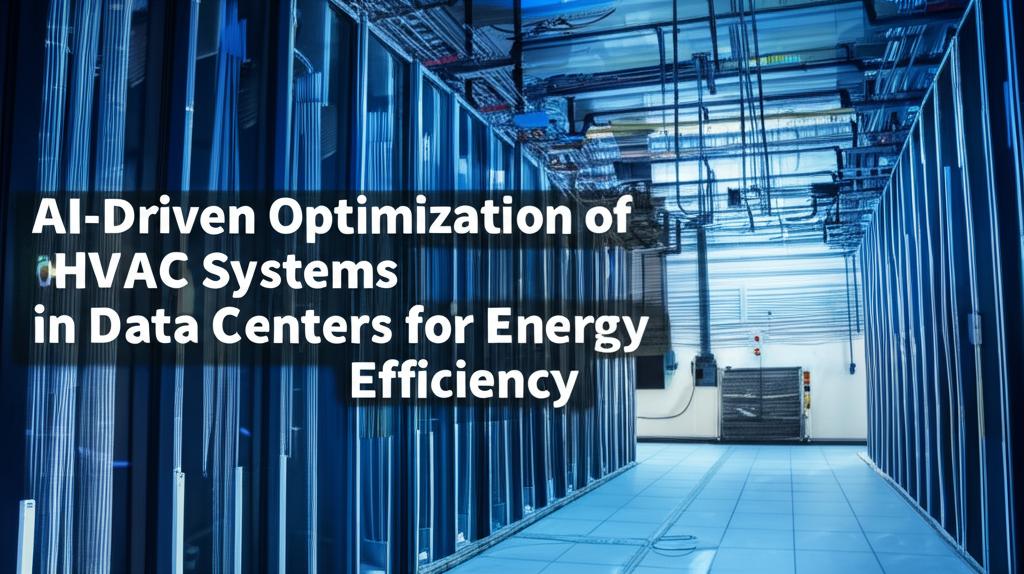The relentless growth of data generation and processing, largely fueled by the proliferation of artificial intelligence (AI) applications, is placing unprecedented demands on data center infrastructure. Cooling systems, which can account for up to 40-50% of a data center's total energy consumption, are a critical area for optimization. AI-driven solutions are emerging as a transformative approach to enhance the energy efficiency of Heating, Ventilation, and Air Conditioning (HVAC) systems in these vital facilities.
The Challenge: Rising Energy Consumption and Heat LoadsTraditional data center cooling methods are increasingly struggling to cope with the intense heat generated by high-density server clusters and powerful AI-specific hardware like GPUs and CPUs. As AI workloads surge, energy consumption in data centers is projected to grow significantly. This escalating energy demand, coupled with rising energy costs and stricter sustainability mandates, presents a perfect storm for data center operators. Maintaining optimal operating temperatures is crucial not only for energy efficiency but also for ensuring equipment longevity and preventing costly downtime.
AI to the Rescue: Smart, Predictive, and Adaptive CoolingArtificial intelligence offers a sophisticated way to manage and optimize HVAC systems in real-time, moving beyond reactive adjustments to proactive, predictive control. Here's how AI is making a difference:
- Real-Time Data Analysis and Dynamic Adjustments: AI algorithms process vast amounts of data from sensors that monitor temperature, humidity, airflow, server load, and even external weather conditions. This allows the system to make dynamic adjustments to cooling output, ensuring that cooling resources are directed precisely when and where they are needed. This minimizes overcooling, a common source of energy waste in traditional setups.
- Predictive Maintenance: By analyzing historical data and real-time sensor readings, AI can predict potential equipment failures or inefficiencies in the HVAC system, such as clogged filters or stuck valves. This allows for proactive maintenance, reducing unexpected downtime, extending the lifespan of HVAC components, and ensuring the system runs at peak efficiency.
- Digital Twin Technology: AI can create a "digital twin," a virtual replica of the data center's cooling infrastructure. This allows for continuous monitoring, prediction, and optimization of the cooling system's efficiency by simulating different scenarios and adjusting control parameters in real time.
- Optimized Airflow Management: AI can analyze airflow patterns to identify hot spots and areas of inefficient cooling. Based on this, it can adjust fan speeds, air distribution, and even suggest physical modifications like moving floor tiles to optimize airflow and eliminate thermal imbalances.
- Integration with Renewable Energy Sources: AI-driven control systems can align data center operations with the fluctuating availability of renewable energy sources like solar and wind. Predictive control strategies can adjust cooling based on energy price signals and renewable energy availability, reducing reliance on fossil fuels and supporting sustainability goals.
- Workload-Aware Cooling: AI can anticipate increases in IT load and preemptively adjust cooling to maintain optimal temperatures. This dynamic response to changing demands ensures that energy isn't wasted on cooling underutilized equipment.
The application of AI in HVAC optimization is already demonstrating significant results. For instance, Google leveraged its DeepMind AI to reduce cooling energy consumption in its data centers by up to 40%. Other facilities have reported substantial reductions in cooling energy demand and improvements in Power Usage Effectiveness (PUE) after implementing AI-driven controls.
Looking ahead, the integration of AI in data center cooling is expected to become even more sophisticated:
- Advanced AI Algorithms: Deep learning models will further refine HVAC automation, leading to even more accurate energy predictions and optimized performance.
- Liquid Cooling Optimization: As data centers adopt more advanced cooling technologies like direct-to-chip and immersion liquid cooling, AI will play a crucial role in managing these complex systems for maximum efficiency.
- Autonomous Operations: AI-driven HVAC systems will move towards greater autonomy, requiring minimal human intervention to analyze data, detect patterns, and make system adjustments.
- Edge Computing Integration: AI will also optimize cooling in edge data centers, which process data closer to the end-user, reducing overall energy consumption across the network.
- Heat Recovery Systems: AI can help optimize heat recovery systems that repurpose waste heat from data centers for other uses, such as heating buildings or supporting agriculture, further advancing green data center concepts.
Despite the compelling benefits, the widespread adoption of AI-driven HVAC optimization faces some challenges:
- Integration with Legacy Systems: Many existing data centers rely on older infrastructure that may not be fully compatible with modern AI systems, potentially requiring costly upgrades.
- Data Handling and Processing: AI relies on vast amounts of clean, structured data. Managing and processing this data effectively can strain existing infrastructure.
- Reliability Concerns: Some operators remain hesitant to fully entrust critical cooling management to AI due to concerns about unexpected shutdowns or system errors. Developing robust and secure AI control systems is crucial.
- Initial Implementation Costs: The upfront investment in AI software, sensors, and potentially new hardware can be a barrier for some organizations.
- Skill Gap: Managing and maintaining complex AI systems requires specialized expertise, which may necessitate hiring new talent or retraining existing staff.
AI-driven optimization of HVAC systems represents a significant leap forward in achieving energy efficiency in data centers. By leveraging the power of real-time data analysis, predictive capabilities, and adaptive control, AI can dramatically reduce energy consumption, lower operational costs, enhance equipment reliability, and support sustainability goals. While challenges exist, the ongoing advancements in AI technology and a growing understanding of its benefits are paving the way for smarter, greener, and more resilient data centers of the future. As the demand for data processing continues to explode, AI will be an indispensable tool in managing the energy footprint of the digital world.

